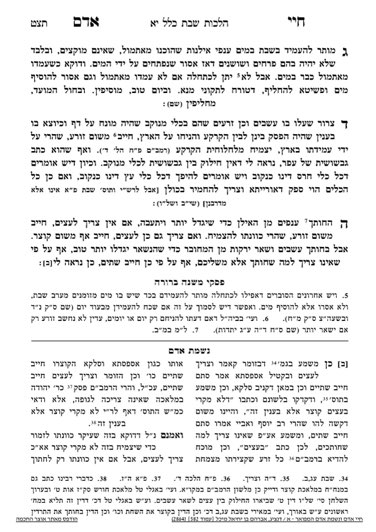Sponsorships for the upcoming Klalim, which discuss the 39 melachos of Shabbos, are available. Please contact Rabbi Reingold for more information at rabbireingold@gmail.com or 301.996.5910
We are beginning siman 3, learning the halachos of zoreiah. The Chayei Adam is discussing a person who wishes to take branches which were detached from the ground before Shabbos and place them in water. They will not grow since they are detached, so there is no issur of hatzmacha, but their placement in water maintains them for longer. Although there is no issur deoraysa of zoreiah, since nothing is growing through this action, it is assur miderabanan because it has a similar type of effect on the plants in the sense that it maintains their freshness.
That being said, we need to understand the scenarios in which it will be muttar to place branches into water:
If the branches have flowers which have not yet opened, and placing the branches into water will (likely) cause the flower to open, it is assur miderabanan due to the issur of hatzmacha. Although hatzmacha is technically defined as causing something to sprout into existence and the closed flower is already in existence, Chazal understood that the process is too similar so they extended the issur of hatzmacha to include such a case.
If they are only branches with Nof lowers, or flowers which have blossomed already, that concern doesn’t apply.
The Chayei Adam writes that although branches are neither food nor a kli, they are still not muktzah because they were designated for this purpose before Shabbos. Therefore, if there are no flowers on the branches, it is muttar to place them into water on Shabbos. However, the Chayei Adam adds a caveat that one cannot place them into water for the first time on Shabbos itself. They can only be placed into water on Shabbos itself if they were previously in water before Shabbos. Returning them to their previous state of being in the water is less significant than putting them in the water for the first time. Furthermore, even if the branches had been in water before Shabbos and were removed before Shabbos, they cannot be replaced on Shabbos. They can only be put back into the water on Shabbos if they had been in water from the outset of Shabbos.
It is also assur to add or change the water on Shabbos. All of these are tircha and an improvement to the flowers. On Yom Tov one may add water, and on Chol Hamoed one may change the water.
The Mishnah Berurah will point out that the Pri Megadim understands the basis of this question differently, and understands the primary issue is tircha. Thus, according to the Pri Megadim, if everything is set up before Shabbos, one could place the branches into water lechatchilla, since it is not considered tircha to simply place the branches into the water. The Shulchan Aruch Harav follows the Pri Megadim. The Shaar Hatziyun (336:sk 58) brings the Pri Megadim and suggests that maybe one can rely on it, when there are no flowers that will bloom on it. Lechatchilla, one should be machmir, but should one need to be meikil, they have what to rely upon.
Summary
- One cannot place branches with unopened flowers into water on Shabbos itself.
- If the branches have no flowers, one may return them to water on Shabbos itself, but lechatchilla should not place them into the water for the first time on Shabbos itself. Bedieved, one may rely on the opinions that allow for the branches to be placed in the water for the first time on Shabbos itself.
- It is assur to add water to branches on Shabbos. It is muttar to add water on Yom Tov, and to change the water on Chol Hamoed



